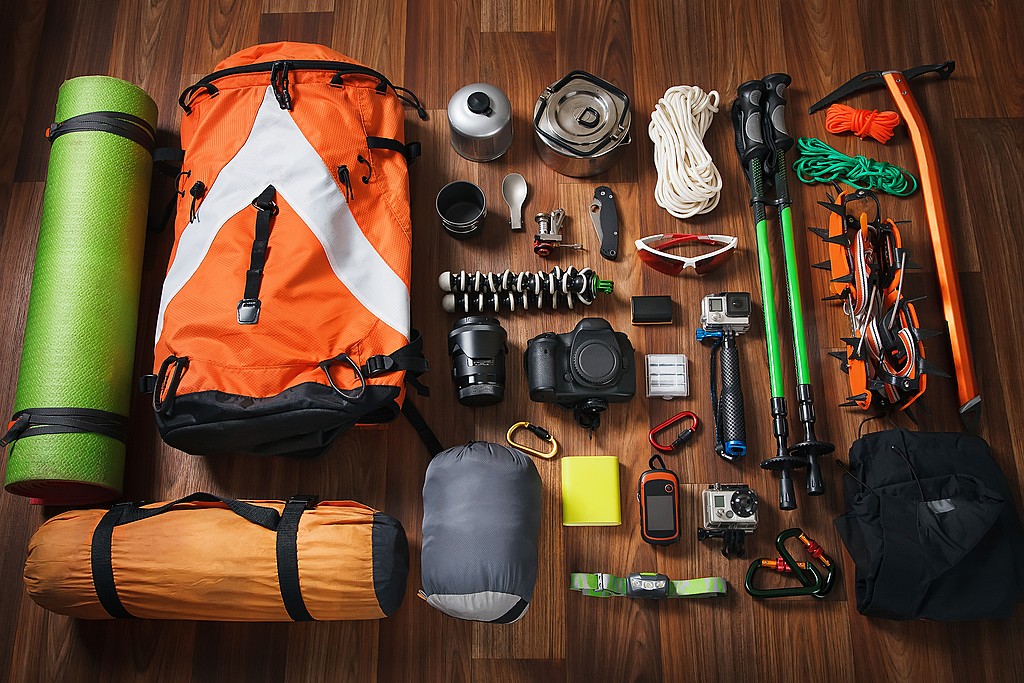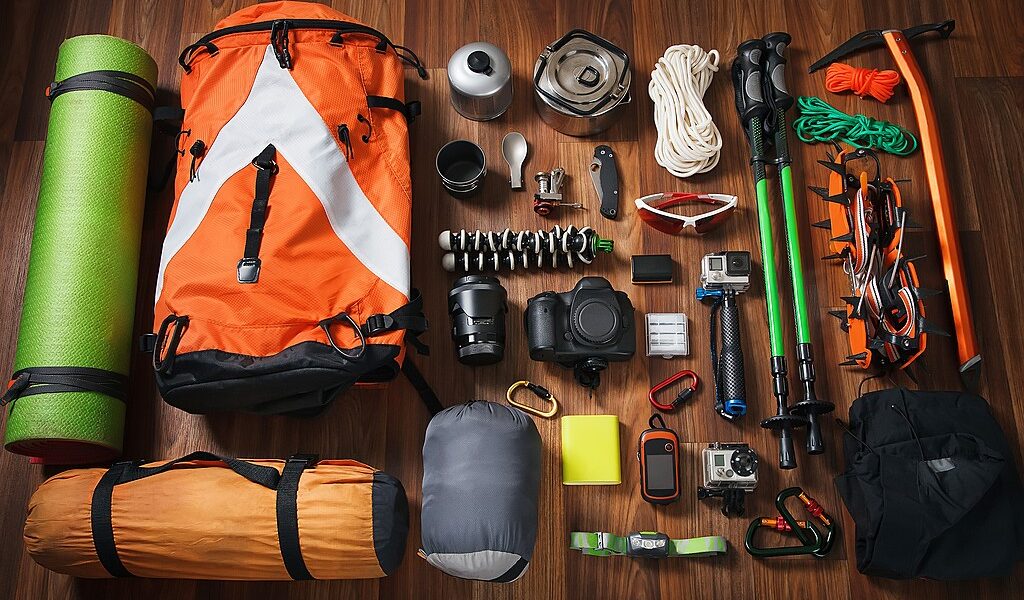
From physical preparation and training to packing and visas: there are a few things you must do before heading to the Himalaya to ensure a smooth, safe, and comfortable trip. While you don’t need to be Superman or Wonder Woman to enjoy trekking in the Himalaya, the better prepared you are, the more you’ll get out of the experience.
In the thrilling anticipation of an impending adventure, it’s remarkably easy to let crucial details slip through the cracks, details that can significantly impact the comfort and overall success of your journey. While Kathmandu and Pokhara offer a variety of supplies and conveniences, once you venture into the breathtaking, yet often remote, Nepali wilderness, acquiring forgotten essentials becomes a considerable challenge. Therefore, meticulous preparation is paramount. The following guide provides practical advice and essential considerations to ensure you’re well-prepared for your unforgettable experience in the majestic Himalaya.
## Essential Travel Documents: Your Gateway to Nepal
### Passport: Your International Identification
For citizens of most countries, including those hailing from the United States, the United Kingdom, and Australia, a valid passport is an absolute necessity. This passport must maintain a validity period extending at least six months beyond your intended date of entry into Nepal. This is a non-negotiable requirement. It’s imperative to verify your passport’s expiration date well in advance of your travel. If you find that your passport is nearing expiration or if you don’t yet possess one, initiating the application or renewal process without delay is highly recommended. Passport processing times can vary, and waiting until the last minute could potentially jeopardize your travel plans.
### Nepal Visa: Permission to Explore
The vast majority of nationalities require a visa to legally enter and stay within Nepal. Fortunately, obtaining this crucial document is a relatively straightforward process. You have two primary options: acquire your visa upon arrival at Tribhuvan International Airport in Kathmandu, or apply in advance through your nearest Nepali Embassy or Consulate. Obtaining it upon arrival can save time and planning. For those opting for the on-arrival method, be prepared for potential queues and ensure you have the necessary documentation readily available. Applying in advance offers the advantage of peace of mind, ensuring that your visa is secured before you even embark on your journey. The standard visa fee for a one-month stay is approximately $40 USD, but it’s always wise to confirm the most up-to-date fee structure with the relevant authorities.
### Travel Insurance: Your Safety Net
While not a mandatory prerequisite for entering Nepal, comprehensive travel insurance is of utmost importance, acting as a critical safety net throughout your travels. The unpredictable nature of outdoor activities, particularly trekking, necessitates a robust insurance policy that covers unforeseen circumstances. Imagine a scenario where you or a member of your party sustains an injury while trekking in a remote region. In such instances, a helicopter evacuation to Kathmandu may be required, incurring substantial costs potentially exceeding $3,000. Furthermore, should the need arise for onward international medical transportation, your insurance policy should be equipped to handle these expenses. It’s also vital to recognize that the quality and accessibility of healthcare facilities outside of Kathmandu can be limited. Therefore, ensure that your insurance policy provides adequate coverage for a wide range of potential accidents and emergencies, offering you and your fellow travelers peace of mind throughout your adventure.
## Packing Essentials: Preparing for Varied Conditions
### Daypack: Your On-the-Go Companion
We strongly recommend carrying a versatile daypack that can serve as your go-to bag for daily essentials, both during your trek and while exploring various locations. This carry-on bag should be lightweight and comfortable, capable of holding approximately 9 lbs (4 kg) of essential items. The following items are highly recommended for inclusion in your daypack:
* A warm sweatshirt or fleece jacket to combat fluctuating temperatures.
* A reliable rain jacket and pants to shield you from unexpected showers.
* Your camera to capture the stunning landscapes and unforgettable moments.
* A reusable water bottle to stay hydrated throughout your excursions.
* Energy-boosting snacks to keep your energy levels up.
* Sun block with high SPF to protect from the intense sun at high altitude.
* Sunglasses for protecting your eyes from sun glare
* A hat to shield you from the sun or cold.
* Gloves or mittens to keep your hands warm in colder climates.
* Binoculars (optional) for enhanced wildlife viewing and landscape appreciation.
For the remainder of your belongings, including clothing, sleeping bags, spare water, and other trekking essentials, a porter service is typically employed. A sturdy duffel bag is generally the most convenient option for porters to carry. It’s important to be mindful of weight restrictions on domestic flights, which typically limit baggage to 15 kg, encompassing both checked and hand baggage. To optimize your packing, consider leaving behind any extra clothing or items that you won’t require during the trek at your hotel in Kathmandu.
## Clothing and Equipment Checklist: Dressing for Success
### Exploring Towns
Within Kathmandu and Pokhara, the dress code is generally informal, except for special events or formal gatherings. To respect local customs and sensitivities, it’s advisable to opt for conservative attire that covers the knees, chest, and shoulders. In mid-range to higher-end restaurants, women often wear skirts or slacks, reflecting a slightly more formal ambiance.
### Trekking Essentials
Outside of Kathmandu and particularly during trekking expeditions, long shorts are generally acceptable. Comfortable, loose-fitting clothing made from breathable fabrics is highly recommended for optimal comfort and ventilation. A paramount item for any trek is a pair of high-quality hiking boots. Lightweight hiking boots with sturdy ankle support (avoid walking shoes) and rubber lug soles with thick tread are an absolute necessity for navigating uneven terrain. Ensuring that your hiking boots are comfortable and thoroughly broken in is crucial to prevent blisters and discomfort. Uncomfortable boots can quickly detract from your trekking experience. When wearing your hiking boots, opt for thick, natural fiber socks to provide additional cushioning and moisture-wicking properties.
### Detailed Packing Checklist
* Well-broken-in hiking boots: Lightweight with good ankle support and tread.
* Spare pair of shoes: Slip-ons such as “crocs” are ideal for relaxing at campsites.
* 2-3 pairs of trekking socks: Laundry facilities are available in select locations.
* 3-4 pairs of cotton or cotton blend underwear: Prioritize comfort and breathability.
* 2 pairs of comfortable, lightweight pants or shorts for hiking: Opt for quick-drying fabrics.
* 4-5 t-shirts: Choose moisture-wicking materials for optimal comfort.
* A warm down jacket: Essential for staying warm in cold temperatures.
* A fleece jacket: Ideal for layering and wearing at night.
* Fleece pants: Comfortable and warm for nighttime wear.
* Waterproof rain gear (jacket and pants): A must-have for protection against rain and wind.
* Sleepwear: Comfortable and lightweight for a good night’s rest.
* Walking poles: Provide stability and reduce strain on your knees.
* Personal first aid kit: Containing essential medications and supplies.
### First Aid Kit Essentials
* Cold-symptom relief tablets: Including antihistamine and cough suppressant.
* Sunscreen and lip balm with sunscreen: Protect your skin from the harsh sun.
* Band-aids: For minor cuts and abrasions.
* Ace bandage: For sprains and strains.
* Cyprofloxin: An antibiotic for bacterial diarrhea (available over the counter in Nepal).
* Diamox: For altitude sickness (discuss with your doctor before use; available over the counter in Nepal).
* Prescription medicines: In their original bottles.
* Imodium, Lomotil, or similar anti-diarrhea medicine: To combat digestive issues.
### Other Personal Items
* Wrist watch/travel alarm clock: To keep track of time.
* Sunglasses and case: Providing 90-100% ultraviolet and some infrared protection.
* Money belt: For secure storage of valuables.
* Mag light or head lamp: With extra batteries and spare bulb.
* Day pack: Of 25 liter size, suitable as an airline carry-on bag.
* Camera, spare batteries, spare memory stick: To capture memories.
* Locks for your suitcase/duffel bag: For added security.
* Jumbo ziploc bags: For organizing and sorting your belongings.
* Quick dry, absorbent towel: For showering and drying off.
* Menstrual supplies: For women.
* Thread, needles, safety pins: For minor repairs.
* Hand sanitizer: To maintain hygiene.
* Your favorite snacks: For sustenance during trekking (optional).
* Your own favorite herbal teas: (optional).
* Games or books: For afternoon “down time.”
Kathmandu and Pokhara, particularly, offer a diverse array of supplies and goods. Although it’s preferable to bring everything you need from home to avoid being caught short, forgetting something isn’t necessarily a major crisis. Here are some important items that can be purchased in Nepal (although not readily available in smaller villages):
* Maps
* Language or guide books
* Local snack foods
* Wool/fleece hats and sweaters/jackets
* Trekking clothes, including Gortex
* Local-style clothing in all sizes
* Western-style clothing, including cotton
* Extra batteries
* Post cards, stamps, and books in English
## Physical Preparation: Ensuring a Safe and Enjoyable Trek
To fully appreciate and enjoy a trek in the Himalayas, it’s essential to be in good physical condition and health. Medical facilities are scarce in trekking areas, making physical fitness all the more important. Trekking altitudes typically begin around 9100 ft (2800 m) and can ascend to approximately 17,000 ft (5200 m), contingent upon the specific trek you undertake. Experiencing some shortness of breath during uphill sections is common, and individuals with pre-existing breathing problems should consult a physician to ascertain their suitability for trekking. Furthermore, the ascents and descents can be particularly demanding for those with knee problems. Paths are often rocky and terraced, presenting uneven rocky steps.
### Training Regimen
Regardless of your current fitness level, specific training tailored for a trip to the mountains of Nepal is highly recommended. If you’re planning an especially rigorous trek, consider commencing physical training up to three months in advance. Effective training methods include physical fitness exercises, hiking, step classes, stair steppers, using stairs, jogging, a treadmill, and working with a personal trainer. These activities provide valuable preparation for navigating hilly terrain, as does walking or jogging on an incline. These exercises should be performed in conjunction with proper stretching techniques. If feasible, incorporate outdoor hill walks into your exercise routine and gradually increase your time and intensity at the gym or in exercise classes.
Each day of trekking typically entails up to 6 hours of walking, characterized by steep ascents and descents with minimal flat areas. It’s also important for trekkers to be comfortable with heights.
### Immunizations
While there are no mandatory immunizations required for traveling to Nepal, consulting your physician or a travel immunization center is strongly encouraged. Standard immunizations typically recommended for Nepal include hepatitis and typhoid. Mosquito-borne diseases are generally uncommon in most parts of Nepal due to the elevated altitude.

